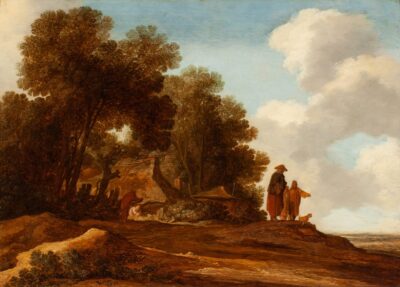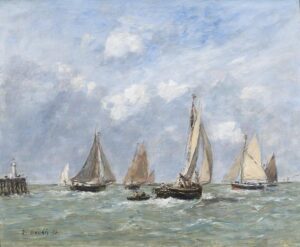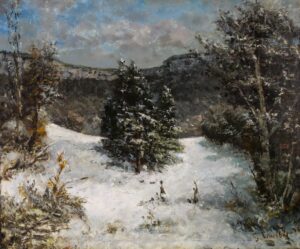Description
- Pieter de Molijn (United Kingdom 1595 – The Netherlands 1661) was born in England and when he moved to Holland is unknown, but he made Haarlem his home for life. He joined Haarlem’s Guild of Saint Luke in 1616 and served as its dean in 1633, 1638, and 1646. His early landscape style was strongly influenced by the realism of Esaias van de Velde and his pupil Jan van Goyen, who were both in Haarlem for a short period after Molijn’s arrival.
Works by Molijn, Van Goyen, and Salomon van Ruysdael represent the climax of realism in Dutch landscape painting. These artists eliminated the ornamental foliage and glittering highlights of their Mannerist predecessors. Molijn’s most innovative period was the 1620s. In depicting the dunes and the flat countryside around Haarlem, he chose not to divide the landscape into separate realms as was common practice. Instead, he subordinated scattered details to large areas of light and shadow and unified the scene by prominent diagonals leading into the distance.









Reviews
There are no reviews yet.